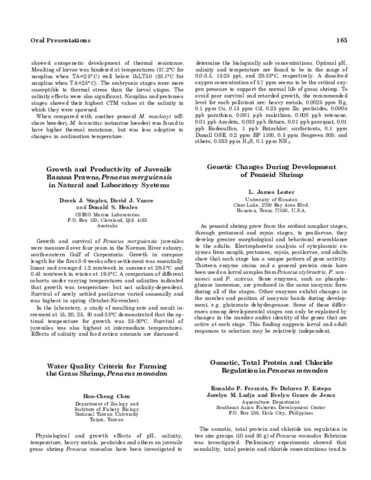Growth and productivity of juvenile banana prawns, Penaeus merguiensis in natural and laboratory systems
- Global styles
- MLA
- Vancouver
- Elsevier - Harvard
- APA
- Help
Share
Abstract
Growth and survival of Penaeus merguiensis juveniles were measured over four years in the Norman River estuary, south-eastern Gulf of Carpentaria. Growth in carapace length for the first 8-9 weeks after settlement was essentially linear and averaged 1.2 mm/week in summer at 29.5°C and 0.45 mm/week in winter at 19.5°C. A comparison of different cohorts under varying temperatures and salinities indicated that growth was temperature- but not salinity-dependent. Survival of newly settled postlarvae varied seasonally and was highest in spring (October-November).
In the laboratory, a study of moulting rate and moult increment at 15, 20, 25, 30 and 35°C demonstrated that the optimal temperature for growth was 25-30°C. Survival of juveniles was also highest at intermediate temperatures. Effects of salinity and food ration amounts are discussed.
Description
Abstract only.
Suggested Citation
Staples, D. J., Vance, D. J., & Heales, D. S. (1985). Growth and productivity of juvenile banana prawns, Penaeus merguiensis in natural and laboratory systems (Abstract only). In Taki Y., Primavera J.H. and Llobrera J.A. (Eds.). Proceedings of the First International Conference on the Culture of Penaeid Prawns/Shrimps, 4-7 December 1984, Iloilo City, Philippines (p.165). Iloilo City, Philippines: Aquaculture Department, Southeast Asian Fisheries Development Center.
Type
Oral presentationISBN
9718511008



